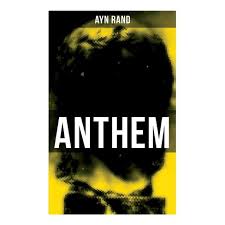PART TWO
byPart 2 begins with a quiet but powerful disruption in the life of Equality 7–2521. Among the vast fields and under the watchful gaze of authority, he notices Liberty 5–3000—a woman whose presence unsettles the rigid calm of his world. She moves with precision, her eyes fierce and proud, different from the others who bow under the sameness of their roles. To him, she becomes “the Golden One,” a name that lives in his thoughts, whispered only in silence. Although words are forbidden between them, their eyes speak often. Each glance carries weight, an unspoken defiance against a system where love, curiosity, and names from the heart are forbidden. He is not supposed to feel, but he does.
Their world allows no romance. Emotions are regulated like the hours of sleep or the rations of food. Citizens do not choose their partners. Mating is an obligation dictated by the Council, mechanical and scheduled. Even the act of reproduction is stripped of warmth and intention. Yet in this tightly controlled environment, the simple sight of Liberty 5–3000 lights a fire within Equality 7–2521. He studies her from afar, hiding the joy it brings. Each encounter—though brief and guarded—adds to his growing awareness that something within him is changing. What he feels is not allowed, but it is real.
He recalls the first time they exchanged gestures. A simple wave, the lifting of a hand, felt like a sacred ritual. No words were spoken, yet everything was said. In a world built to eliminate difference, they discovered each other as individuals. Her gaze did not see him as a number or a duty, but as someone distinct. He feels honored, even chosen. Their unspoken bond marks the beginning of his awakening, and the realization that freedom begins with recognition—of oneself and of another.
The depth of their connection contrasts sharply with the emotional emptiness around them. Their society suppresses affection and abolishes personal ties. Citizens move in silent submission, their thoughts bound to rules and rituals. Equality 7–2521 begins to see this for what it is—a lifeless imitation of unity. Behind the uniform smiles lie quiet fears and heavy obedience. He starts to wonder how many others bury their feelings as he once did. The joy he feels is new, but it makes the lifeless world he’s known feel even colder.
As his thoughts evolve, so does his awareness of the world beyond the barriers. The mention of the Uncharted Forest stirs curiosity. People speak of it in hushed tones, filled with fear. Yet he begins to wonder if it holds not danger, but answers. The Unmentionable Times, too, take on a new meaning. These forbidden stories may carry the truth about freedom, knowledge, and what life was like before control. He senses that what is hidden is not evil, but powerful. And that power is what his society fears most.
Through the lens of Equality 7–2521, readers begin to question the price of order and the purpose of control. The regime he lives under does not simply suppress rebellion—it prevents people from even imagining it. But the smallest crack in the wall, a glance from Liberty 5–3000, has started to shake the foundation. He begins to feel that to live fully, one must break free—not in grand acts of revolution, but in quiet, personal moments of truth. This chapter plants the seeds for something far greater than a romance. It is the start of reclaiming the self in a world that has buried it.
The subtle tension of their bond reveals a broader message: that resistance does not always roar. Sometimes, it looks like a raised hand, a secret smile, or a name spoken only in one’s mind. Equality 7–2521’s world may be bound in laws and walls, but his heart begins to move beyond them. The light of individuality flickers in the dark, and with each stolen moment, it grows stronger.

